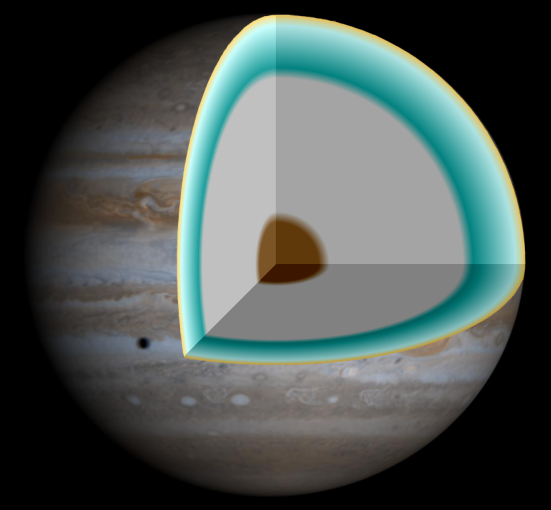Page 1 of 1
Methane Blue Planets
Posted: Fri Jan 01, 2010 3:15 pm
by neufer
http://www.planetary.org/blog/article/00002289/ wrote:
The Planetary Society Blog By Emily Lakdawalla
Dec. 31, 2009 | 10:06 PST | 18:06 UTC
Uranus (left) _&_ Neptune (right)


The images for these two color composites were obtained by the same spacecraft through the same sets of filters and processed in the same way, so should accurately represent the relative colors of Uranus and Neptune at the times that Voyager 2 passed by them. Credit: NASA / JPL / Bjorn Jonsson
<<Really, [Uranus & Neptune} are very, very similar. We don't have
one blue-green world and one blue one, as the two are so often depicted.
They're pretty much the same methane blue;
Uranus just had more high haze, making it whiter (not greener) than Neptune.
Now that the Uranian equinox is past and atmospheric circulation is producing storms
I'll bet they'd look even more similar from up close.>>
Re: Methane Blue Planets
Posted: Fri Jan 01, 2010 3:26 pm
by geckzilla
That's interesting. It also makes Uranus the most aesthetically boring planet in the solar system. I recently came across a BBC
article depicting a blue Venus. I thought that was very weird but that blue Venus is also an APOD. Blue is the most commonly favorite color.
Re: Methane Blue Planets
Posted: Fri Jan 01, 2010 5:31 pm
by bystander
geckzilla wrote:... that blue Venus is also an APOD ...
Is
this the one you were thinking about? If so, it's a false color uv photo. I always thought of Venus as being kind of
yellow.
Re: Methane Blue Planets
Posted: Fri Jan 01, 2010 5:43 pm
by geckzilla
Nah, it's the exact same picture from that BBC article.
Here.
And yeah, when I read the BBC article, I was wondering what was wrong with Neptune's clouds... then I realized that they used that colorized Venus to represent the planet. Apparently it's visible light but they decided using blue would bring out the subtle details better.
Re: Methane Blue Planets
Posted: Mon Jan 04, 2010 5:16 pm
by Orca
While its surface is bland, as a kid the images of Uranus and its delicate, concentric ring system captured my imagination (though the rings are best depicted in art and computer-generated images, as the rings are very faint).

Re: Methane Blue Planets
Posted: Tue Jan 05, 2010 4:57 am
by Orca
This is kinda neat:
"sounds" of Uranus' rings. They are interpreted from EM radiation recorded by Voyager 2.
Here's a nice video about
Uranus. Apparently this guy has done many similar videos on the solar system.
Re: Methane Blue Planets
Posted: Fri Jan 22, 2010 12:07 pm
by ajbock
I recently saw a news article about a newly analysed pair of stars that each had a planet with a surface temperature greater than the star itself and that these planets had densities similar to styrofoam! Since methane is a "greenhouse gas", is it possible that a gaseous planet, orbiting close to a star and composed almost entirely of Methane and CO2, could accumulate enough energy to "outshine" its parent star in IR?
Re: Methane Blue Planets
Posted: Fri Jan 22, 2010 12:49 pm
by neufer
ajbock wrote:I recently saw a news article about a newly analysed pair of stars that each had a planet with a surface temperature greater than the star itself and that these planets had densities similar to styrofoam! Since methane is a "greenhouse gas", is it possible that a gaseous planet, orbiting close to a star and composed almost entirely of Methane and CO2, could accumulate enough energy to "outshine" its parent star in IR?
Water, CO
2, Ozone & Methane are the primary greenhouse gases on Earth but most gases & clouds can provide some sort of greenhouse effect.
We can't observe the liquid/solid surfaces of the gas giant planets, Venus or even Titan and these objects are all warmer the further down one goes in their atmosphere due to the adiabatic contraction of the gases.
Surely the liquid/solid "surface" of Jupiter is much hotter than the gaseous "surface" of the Sun.




